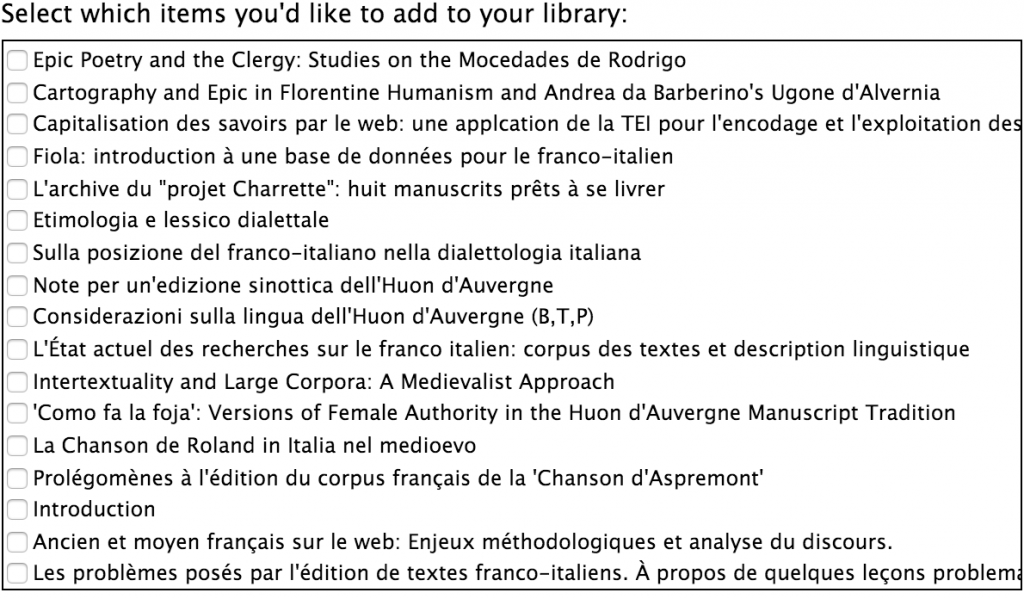[Crossposted on my personal blog.]
Last Monday several of us here at WLUDH traveled down to Duke University for their symposium on Apps, Maps & Models: Digital Pedagogy in Art History, Archaeology & Visual Studies. I found the trip to be enlightening and invigorating. If you are interested in the event, you can find videos of the talks here and here as well as a storify of the Twitter action here. That the event was so well documented is a testimony to how well organized it was by the Wired! Lab.
Many speakers at the event considered how the tools they were using might relate to more “traditional” modes for carrying out their research. They considered and responded to tough questions with and about their work. Are digital methods for tracing the topography of a surface, for example, fundamentally different in kind from analog means of doing so? If so, are they meant to displace those old tools? Why should we spend the time to learn the new technologies? A related question that comes up at almost every digital humanities presentation (though not at any of these): can digital humanities methods show us anything that we do not already know?
Such questions can be particularly troubling when we are investing such time and energy on the work they directly critique, but we nonetheless need to have answers for them that demonstrate the value of digital humanities work, in and out of the classroom. Numerous well-known scholars have offered justifications of digital work in a variety of venues, and, to my mind, the symposium offered many answers of its own, in part by showcasing amazing work that spanned a variety of fields related to preservation, public humanities, and academic scholarship. Presenters were using digital technology to rebuild the past, using digital modeling to piece together the fragments of a ruined church that have since been incorporated into other structures. They were using these tools to engage the present, to draw the attention of museum patrons to overlooked artifacts. The work on display at the symposium struck me, at its core, as engaging with questions and values that cut across disciplines, digital or otherwise.
Most compelling to me, the symposium drew attention to how the tools we use to examine the objects of our study change our relationship to them. The presenters acknowledged that such an idea does hold dangers – after all, we want museum-goers to consider the objects in a collection, not just spend time perusing an iPad application meant to enrich them. But just as new tools offer new complications, changes in medium also offer changes in perspective. As was illustrated repeatedly at the symposium, drone photography, for all its deeply problematic political and personal valences, can offer you a new way of seeing the world, a new way of looking that is more comprehensive than the one we see from the ground. Even as we hold new methodologies and tools up to critique we can still consider how they might cause us to consider an object, a project, or a classroom differently.
Seeing from a different angle allows us to ask new questions and re-evaluate old ones, an idea that speaks directly to my experience at the symposium. I work at the intersections of digital humanities, literary studies, and sound studies. So my participation in the symposium was as something of an outsider, someone ready to learn about an adjacent and overlapping field but, ultimately, not a home discipline. Thinking through my work from an outsider perspective made me want to ask many questions of my own work. The presenters here were deeply engaged in preserving and increasing access to the cultural record. How might I do the same through text analysis or through my work with audio artifacts? What questions and goals are common to all academic disciplines? How might I more thoroughly engage students in public humanities work?
Obviously, the event left me with more questions than answers, but I think that is ultimately the sign of a successful symposium. I would encourage you to check out the videos of the conference, as this short note is necessarily reductive of such a productive event. The talks will offer you new thoughts on old questions and new ways of thinking about digital scholarship no matter your discipline.
